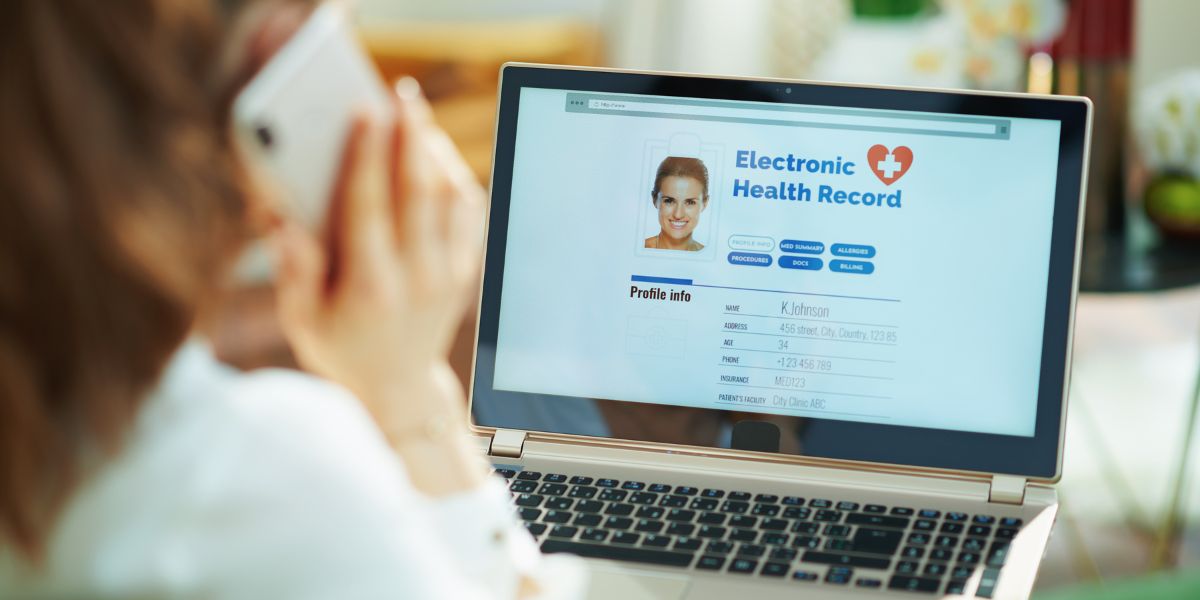3 min read
Are patient portals the best way to communicate with your patients?
Kirsten Peremore
May 25, 2023

According to care providers and clinic staff, portals generate more work, confuse patients, alienate non-users, and increase health disparities.
Patient portals may appear as a secure and personalized avenue for individuals to access their protected health information (PHI) while facilitating seamless communication with their dedicated healthcare providers. It is essential to acknowledge the limitations and carefully assess their effectiveness in comparison to the rising popularity of modern alternatives.
Portals require extra steps that lead to increased friction for both the patient and healthcare provider, which can lead to human error when sharing PHI.
Benefits of patient portals for patients
Patient portals provide password-protected access to personal health information, enabling individuals to stay connected and access their health records anytime, anywhere.
These further include:
- Secure messaging and communication with healthcare providers: Through patient portals, patients can securely communicate with their healthcare providers, discussing concerns, asking questions, and receiving timely responses, fostering a collaborative and efficient healthcare experience.
- Appointment scheduling and prescription refill requests: Scheduling appointments is streamlined, allowing patients to conveniently choose suitable dates and times. This facilitates prescription refill requests, eliminating the need for phone calls or visits to the healthcare provider's office.
- Access to test results and medical records: Patient portals provide patients with access to their test results and medical records, empowering them to review and monitor their health status, make informed decisions, and engage in proactive healthcare management.
- Personalized health education and resources: Patient portals offer personalized health education materials and resources tailored to each individual.
Limitations to patient portals
Patient portals may face challenges due to technology and accessibility barriers, limiting access for some patients who may not be familiar with or have the necessary resources.
Privacy and security concerns surrounding patient portals revolve around safeguarding the storage and transmission of sensitive health information, including personal identifiers, medical diagnoses, and treatment plans. Patient engagement and adoption of portals pose challenges relating to the fact that frequent logins and the possible need to download applications often act as a deterrent to users.
A study by the Office of the National Coordinator for Health Information Technology discovered that 25% of people found portals difficult to log in, while 20% said they were not comfortable with computers and preferred to speak to doctors directly.
Other limitations to portals include:
- Poor searchability
- Lack of easy access to medical records on the go
- Extra steps to share patient information
Hurdles to hosting a patient portal
Healthcare providers choosing to host and maintain their own patient portals face several challenges. These include:
- Development and maintenance costs: Building and continuously updating a patient portal software can be a significant financial burden for healthcare providers. It requires investment in software development, infrastructure, security measures, and ongoing maintenance.
- Technical expertise and resources: Developing and managing a patient portal software requires specialized technical expertise, including software development, cybersecurity, and system administration. Healthcare providers may need to invest in hiring or training staff with these skills.
- Time and effort: Creating and maintaining a patient portal software demands substantial time and effort from healthcare providers. This can divert their focus and resources from core healthcare services, potentially impacting operational efficiency.
- Compliance and security risks: Ensuring compliance with healthcare regulations, such as HIPAA, and maintaining robust security measures to protect patient data can be complex and challenging. Healthcare providers must stay updated with evolving security standards and invest in regular audits and risk assessments.
- User experience and adoption: Designing a user-friendly and intuitive patient portal software that meets patients' needs and preferences requires careful attention to user experience. Poor usability or lack of adoption among patients can undermine the intended benefits of the portal.
- Integration with existing systems: Integrating a custom patient portal software with existing healthcare systems, such as electronic health records (EHR), may present compatibility and interoperability challenges. Data exchange and synchronization between systems can be complicated and time-consuming.
Patient portals versus other communication channels
HIPAA compliance must be upheld by any communication platform involved in sharing PHI. While patient portals offer healthcare providers control over data safeguards and policies, the associated expenses and upkeep may discourage their adoption.
Alternative communication channels include HIPAA compliant email service providers and multiplatform patient communication software, providing comprehensive solutions encompassing texting, calling, and office communication within a unified package.
Questions to consider
- Is the chosen solution easy to use and accessible for both patients and healthcare providers, considering the technological proficiency of the target audience?
- Does the platform prioritize HIPAA compliance and implement robust security measures to safeguard patient data, including encryption protocols, access controls, and data storage practices?
- What specific features are offered by patient portals and alternative communication channels, and do they meet the organization's requirements for secure messaging, appointment scheduling, access to medical records, and educational resources?
- Is the chosen solution compatible with existing healthcare systems, such as electronic health records (EHR) or scheduling software, allowing for seamless integration and efficient data exchange?
- What are the financial implications, including upfront costs, maintenance expenses, and potential training requirements, associated with the chosen solution? Is technical support readily available, and does the organization have the necessary resources for implementation and ongoing management?
- How likely is patient engagement and adoption of the chosen communication method, considering the preferences and needs of the patient population? Does the solution encourage active participation and interaction?
- Can the chosen solution scale and accommodate future growth, additional users, and evolving technological advancements as the organization expands?
The decision on whether to choose patient portals as a communication method ultimately rests with the healthcare provider. Patient portals can offer an intimate and secure means depending on the specific needs and size of the entity.
See more:
Subscribe to Paubox Weekly
Every Friday we'll bring you the most important news from Paubox. Our aim is to make you smarter, faster.




